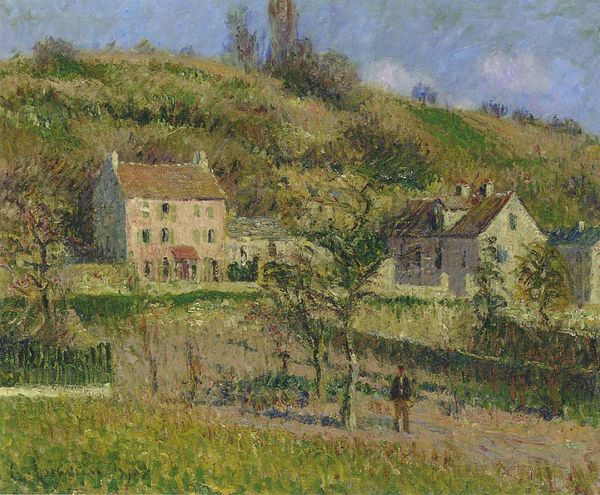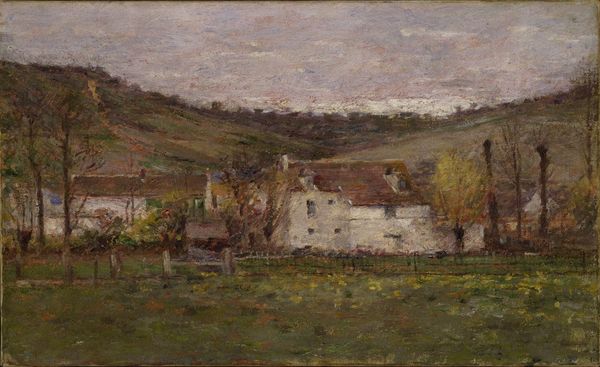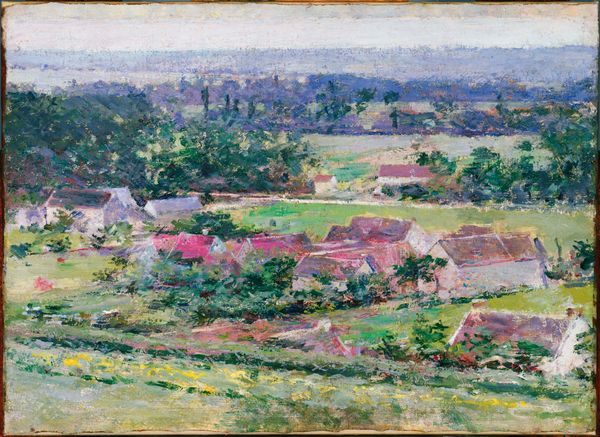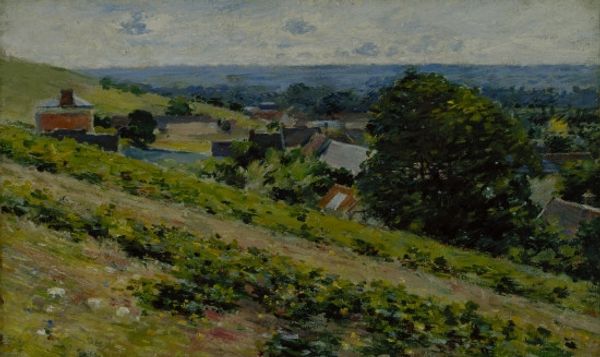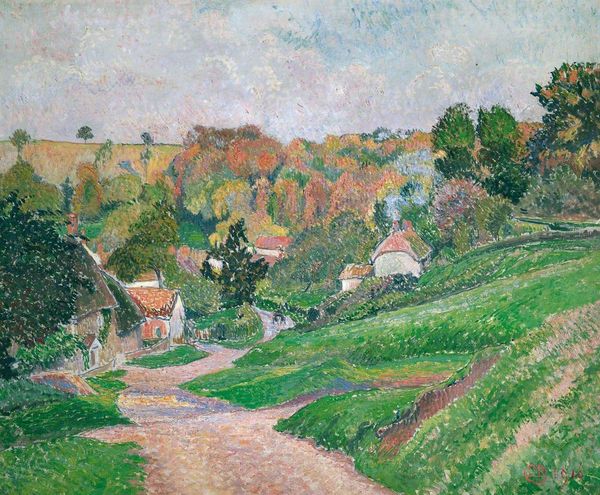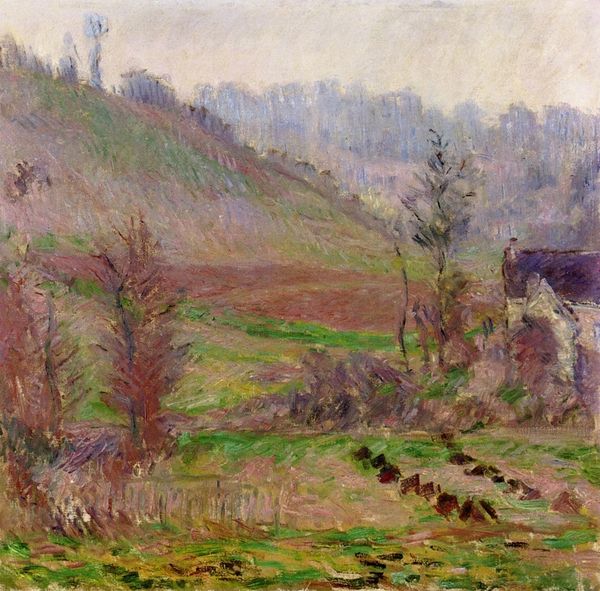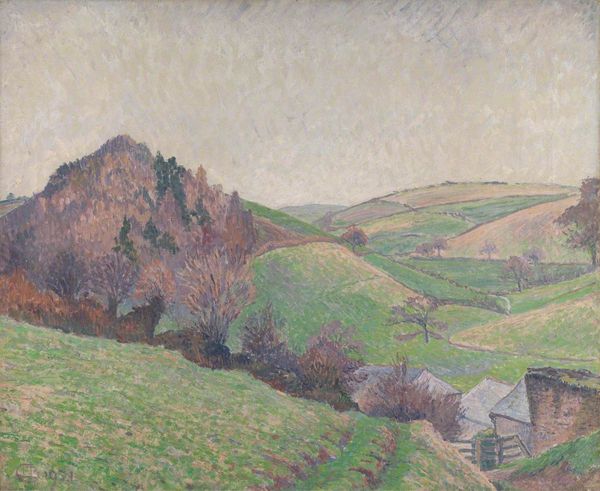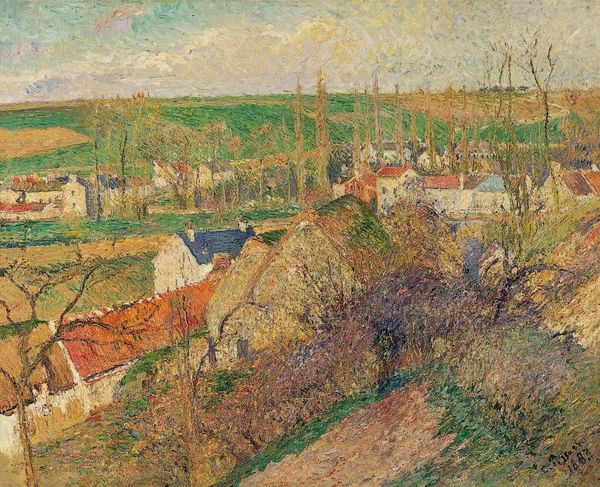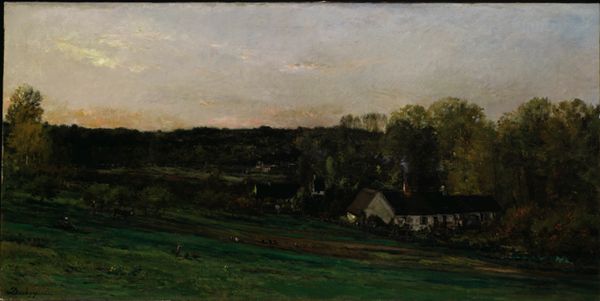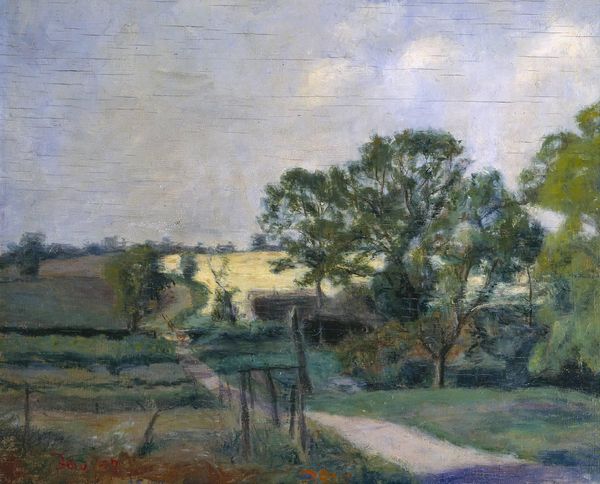
painting, plein-air, oil-paint
#
water colours
#
painting
#
impressionism
#
plein-air
#
oil-paint
#
landscape
#
oil painting
#
cityscape
#
realism
Copyright: Public domain
Editor: We’re looking at Theodore Robinson’s "A Bird's-eye View," created in 1889 with oil paint. It depicts a cluster of buildings and fields from an elevated perspective. It feels very grounded to me, almost tactile. What strikes you most about this piece? Curator: It's interesting you say "grounded." As a materialist, I'm immediately drawn to the textures evident in Robinson's brushwork and the palpable materiality he coaxes from the oil paint. Notice how the thick impasto in the foreground grass contrasts with the thinner washes suggesting distance. What does this juxtaposition suggest about Robinson's labor and engagement with the physical world? Editor: I suppose the contrast highlights the work involved in tilling the land closer to the viewer versus the implied vastness and more generalized treatment of the landscape further away? The direct handling of the paint seems important. Curator: Precisely. The application of the medium becomes part of the story. This elevated view also places the labor of this small town into context within the grander industrial progress underway at the time, inviting the viewer to reconsider romantic notions of rural life. It prompts us to contemplate the relationship between human activity and natural resources, a defining characteristic of the Impressionist movement, no? What's your perspective? Editor: That's a really insightful way to frame it. It’s making me consider Impressionism less about fleeting moments of beauty and more about a reflection of socio-economic conditions and industrial influence. Curator: Indeed. By scrutinizing the material conditions, we reveal layers of meaning embedded within the work. Next time you see such an Impressionist painting, you will consider production methods? Editor: Absolutely. Thanks; I hadn’t considered the materiality beyond technique. Curator: My pleasure. There is always more to the touch than meets the eye!
Comments
No comments
Be the first to comment and join the conversation on the ultimate creative platform.
